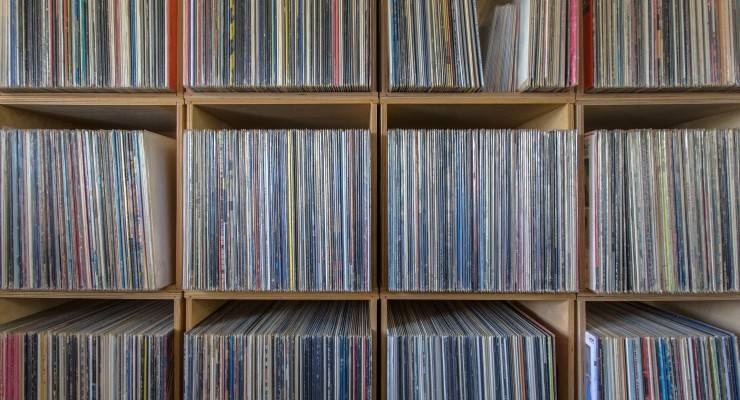
If the owners of Bower Bird Records knew that vinyl was trendy again, they were choosing to ignore that fact. They had no online presence, and clearly made no active effort to get collectors’ items, famous reissues or new releases.
If you happened upon a genuinely famous masterpiece like Fulfillingness’ First Finale in their West Perth store (long gone as far as I can tell), it was as pleasant a surprise to them as it was to you, and records that set you back more than $15 were equally rare. That was where I started collecting LPs about a decade ago, and might explain what I value about them.
I’d been apart from my collection since moving to Melbourne in 2017, until last September when some dear friends organised to post them back to me. These 700 or so records have been my most reliable source of escape from lockdown in the months since.
It’s not just the music itself, nor is it just the alternative history of 20th and 21st century music you get if you take a few chances with second hand-purchases — alongside Sgt Pepper’s and To Pimp a Butterfly, are forgotten vanity projects, the London Philharmonic covering Tom Jones, early Moog synths playing classical music, the album after the one-hit wonders’ one hit, albums with “Tijuana” in the title, and cover stickers indicating the albums were initially ordered off the TV.
It’s not just the magic you get when you cast the net a little wider (and stump up a bit more dosh) — what Somalian bands were doing with disco and funk influences in the ’70s and ’80s, or the prog-rock-slash-traditional-folk band whose name you still don’t know because the liner notes are all in Greek. That all helps, and would have been a source of joy and consolation even if the world didn’t feel as though the plug had been pulled and the whole thing was swiftly draining empty.
And it’s not just the legitimately savage album my dad’s punk band put out in 1984 (300 copies sold, I’m told), although that is my most prized possession.
What has become the real joy in lockdown is the marks of life left on the objects themselves.
On The Sounds of Silence it’s a note from Ingi thanking Steph for “being there when I needed you”. On The Rolling Stones’ Golden Album, a 1967 compilation released only in Japan, someone has added chords to the lyric sheet. The Australian edition of With The Beatles, with the lads looking happy and the title in pink lettering has the word “John” underlined for emphasis — written in clear and deliberate letters like a child’s. Pauline’s 18th birthday note on the disintegrating cover of Nat King Cole’s The Very Thought of You. The blank DJ copy of Common’s Be.
How did a copy of Gratitude by Earth, Wind & Fire make it from Corso Italia in Catania (as indicated by the cover sticker) to a Queenscliff antiques store? What was a German-language copy of the score to The Adventures of Baron Munchausen doing in the same rack?
Lockdown is by its nature the shrinking of possibility, the narrowing of horizons, an uncanny simulacra of depression. Each of these clues to the life this object lived before it got to me — and all those impossible other human realities — acts as a window, a spot past the horizon where the air is cool and bracing.








Thanks for a beautiful piece.
And it’s not just the legitimately savage album my dad’s punk band put out in 1984 (300 copies sold, I’m told), although that is my most prized possession.
Do tell…
Great piece Charlie, count me as a new dedicated fan 🙂
Yeah, name names.
A great read.
Earlier this week I was eyeing the heavy box of vinyl taking up space on a high shelf & wondering if it could be put to better use. Having given away the turntable last year I’m pondering donating the LPs to a charity shop – there may be a hidden gem for a browser to discover.
Lovely
Lovely piece Charlie & so true. I have a wall full of rare vinyl collected over half a decade. Gone fully digital these days and lose myself nerding out with all sorts of sounds from early jazz, soul & ska through to far more contemporary sounds. Music is my saviour. I don’t even have a turntable these days. Not too sure what that says about me. My favourite recording continues to be Astral Weeks bought in a record store in Chalk Farm (a la Withnail & I) in 1969.